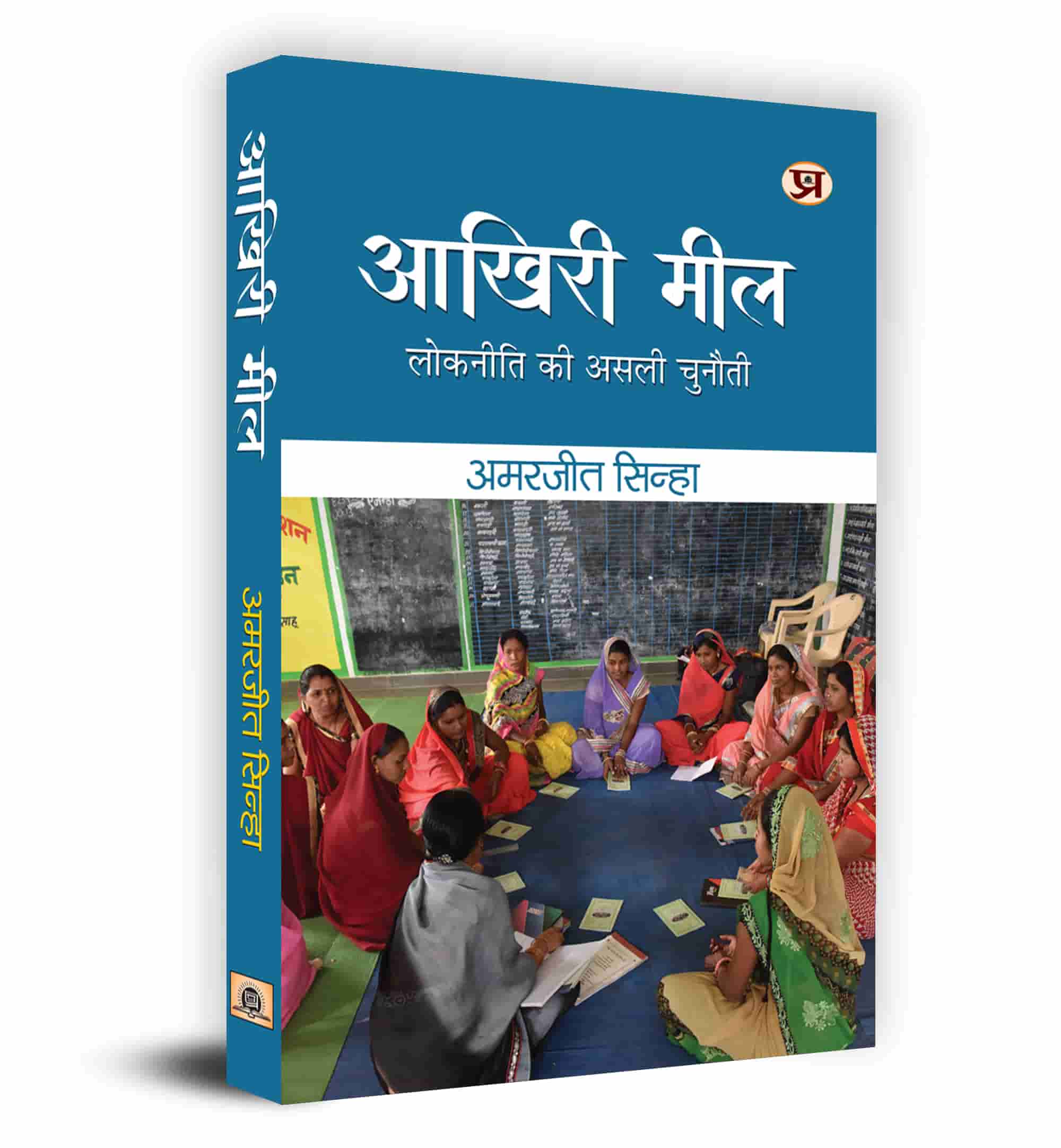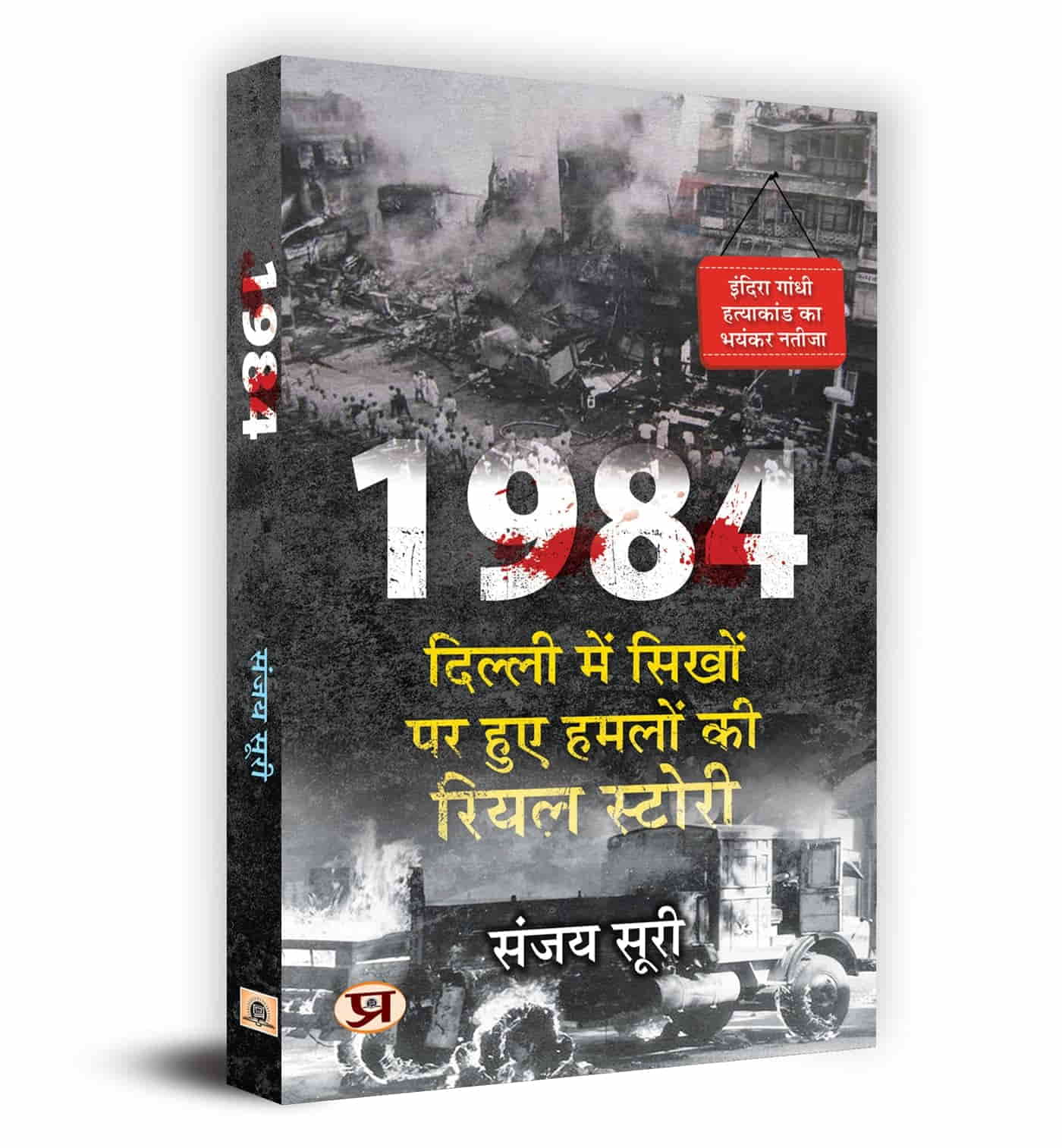₹365










GENERAL KNOWLEDGE 2021 (For All Competitive Examinations)
• J&K AND LADAKH NEW MAP
• INDIAN HISTORY
• ART AND CULTURE
• WORLD HISTORY
• GEOGRAPHY
• ENVIRONMENT AND ECOLOGY
• INDIAN POLITY AND CONSTITUTION
• INDIAN ECONOMY
• SCIENCE
• SCIENCE AND TECHNOLOGY
• WORLD PANORAMA
• INDIAN PANORAMA
• BOOKS AND AUTHORS
• AWARDS AND HONOURS
• GAMES AND SPORTS
• ABBREVIATIONS
____________________________________________________________________________________________________________________________________________________________________________________________________________________________________________________________________________________________________________
| CONTENTS | Constitutional Amendments —Pgs. 42 |
| Preface —Pgs. xiii | Some Important Amendments of the Constitution —Pgs. 42 |
| New Political Map of UTs of J&K and Ladakh released on 2nd Nov. 2019 —Pgs. xiv | Glossary of Constitutional Terms —Pgs. 45 |
| INDIAN HISTORY —PGS. 1–78 | INDIAN ECONOMY —PGS. 1–39 |
| ANCIENT INDIA —PGS. 3–34 | INDIAN ECONOMY —PGS. 3–39 |
| Sources of Ancient Indian History —Pgs. 3 | Characteristics of Indian Economy —Pgs. 3 |
| Literary Sources —Pgs. 3 | Agriculture and Land Development —Pgs. 3 |
| Archaeological Sources —Pgs. 5 | National Income —Pgs. 6 |
| Coin Types —Pgs. 7 | Economic Planning —Pgs. 7 |
| Culture and Civilisation —Pgs. 7 | Types of Planning —Pgs. 8 |
| The Stone Age: An Introduction —Pgs. 8 | Niti Aayog —Pgs. 9 |
| Indus Valley Civilisation —Pgs. 9 | Unemployment —Pgs. 10 |
| Vedic Culture (1500 BC–600 BC) —Pgs. 12 | Some Important Development and Employment Programmes —Pgs. 12 |
| Later Vedic Period (1000 BC–600 BC) —Pgs. 15 | Trade and Commerce —Pgs. 17 |
| Mahajanapada Period (600 BC–325 BC) —Pgs. 16 | New Economic Policy —Pgs. 17 |
| Magadha Empire —Pgs. 17 | Indian Financial System —Pgs. 18 |
| Haryanaka Dynasty (544 BC–412 BC) —Pgs. 17 | The Indian Capital Market —Pgs. 19 |
| Shishunaga Dynasty (413 BC–344 BC) —Pgs. 18 | Indian Fiscal System —Pgs. 20 |
| Nanda Dynasty (344 BC–323 BC) —Pgs. 18 | Banking in India —Pgs. 21 |
| Foreign Invasions —Pgs. 18 | Tax System —Pgs. 23 |
| Religious Movements (600 BC–400 BC) —Pgs. 19 | Industry —Pgs. 25 |
| Maurya Period (322 BC–185 BC) —Pgs. 22 | Large Scale Industries —Pgs. 27 |
| Post-Maurya/Pre-Gupta Period (185 BC–319 AD) —Pgs. 25 | Foreign Direct Investment —Pgs. 27 |
| Kanva Dynasty (73 BC–28 BC) —Pgs. 26 | Foreign Trade —Pgs. 28 |
| Satavahana Dynasty (60 BC–225 AD) —Pgs. 26 | Demography —Pgs. 30 |
| The Cheti Dynasty of Kalinga —Pgs. 26 | Miscellaneous Facts —Pgs. 30 |
| Foreign Successors of Mauryas —Pgs. 26 | SCIENCE —PGS. 1–74 |
| Gupta Period (319 AD–540 AD) —Pgs. 27 | PHYSICS —PGS. 3–30 |
| The Hunas (500 AD–530 AD) —Pgs. 28 | Unit —Pgs. 3 |
| Vakatakas (3rd Century AD–5th Century AD) —Pgs. 28 | Kinematics —Pgs. 3 |
| Post-Gupta Period/Vardhana Dynasty (550 AD–647 AD) —Pgs. 30 | Motion —Pgs. 4 |
| States of the Deccan and South India —Pgs. 31 | Friction —Pgs. 5 |
| Sangam Age —Pgs. 32 | Work, Energy and Power —Pgs. 6 |
| Religious Development —Pgs. 34 | Gravitation —Pgs. 6 |
| MEDIEVAL INDIA —PGS. 35–53 | Satellite —Pgs. 7 |
| The Rajputs —Pgs. 35 | General Properties of Matter —Pgs. 8 |
| Delhi Sultanate (1206 AD–1526 AD) —Pgs. 35 | Pressure —Pgs. 8 |
| The Slave Dynasty (1206 AD–1290 AD) —Pgs. 36 | Floatation —Pgs. 9 |
| The Khilji Dynasty (1290 AD–1320 AD) —Pgs. 37 | Surface Tension —Pgs. 9 |
| The Tughlaq Dynasty (1320 AD–1414 AD) —Pgs. 37 | Capillarity —Pgs. 10 |
| The Sayyid Dynasty (1414 AD–1450 AD) —Pgs. 38 | Density —Pgs. 10 |
| The Lodhi Dynasty (1451 AD–1526 AD) —Pgs. 39 | Viscosity —Pgs. 10 |
| Provincial Kingdoms —Pgs. 40 | Wave —Pgs. 11 |
| Vijayanagar and Other Kingdoms —Pgs. 41 | Important Terms —Pgs. 12 |
| Bahamani Kingdom —Pgs. 42 | Sound Wave —Pgs. 12 |
| Religious Movements in the 15th–16th Centuries —Pgs. 43 | Heat —Pgs. 13 |
| Mughal Period (1526 AD–1540 AD and 1555 AD–1857 AD) —Pgs. 45 | Relation between Temperatures on Different Scales —Pgs. 14 |
| Later Mughals —Pgs. 48 | Some Practical Applications of Thermal Expansion —Pgs. 14 |
| Maratha State (1674 AD–1720 AD) and Maratha Confederate (1720 AD–1818 AD) —Pgs. 51 | Transmission of Heat —Pgs. 14 |
| The Peshwas (1713 AD–1880 AD) —Pgs. 51 | Latent Heat or Heat of Transformation —Pgs. 15 |
| The Advent of Europeans —Pgs. 52 | Thermodynamics —Pgs. 15 |
| MODERN INDIA —PGS. 54–78 | Light —Pgs. 16 |
| Expansion of British Power —Pgs. 54 | Human Eye —Pgs. 19 |
| Anglo-Mysore Wars —Pgs. 55 | Electricity —Pgs. 20 |
| Anglo-Burmese War —Pgs. 55 | Electrochemical Cell —Pgs. 21 |
| The Carnatic Wars —Pgs. 56 | Magnetism —Pgs. 22 |
| Anglo-Maratha Wars —Pgs. 56 | Atomic and Nuclear Physics —Pgs. 23 |
| Economic Impact of British Rule —Pgs. 56 | Electronics —Pgs. 25 |
| Land Revenue Systems —Pgs. 56 | Nanotechnology —Pgs. 25 |
| Indian Renaissance —Pgs. 57 | CHEMISTRY —PGS. 31–49 |
| The Revolt of 1857 AD —Pgs. 59 | States of Matter —Pgs. 31 |
| Indian National Movement —Pgs. 60 | Elements —Pgs. 31 |
| The Partition of Bengal (1905) and Boycott and Swadeshi (1905 AD–1908 AD) —Pgs. 61 | Compounds —Pgs. 32 |
| The Gandhian Era (1917 AD–1947 AD) —Pgs. 62 | Mixtures —Pgs. 32 |
| Main Events During the Gandhian Era —Pgs. 63 | Separation of Mixtures —Pgs. 32 |
| Growth of Modern Education in India —Pgs. 69 | Atomic Structure —Pgs. 33 |
| Important Foreign Travellers/Envoys —Pgs. 69 | Radioactivity —Pgs. 35 |
| Important Sayings —Pgs. 70 | Periodic Classification of Elements —Pgs. 35 |
| Governor-Generals and Viceroys —Pgs. 74 | Chemical Bonding —Pgs. 36 |
| Governor-Generals of India —Pgs. 75 | Acids, Bases and Salts —Pgs. 38 |
| Governor Generals of Free India (1947 AD–1950 AD) —Pgs. 77 | Electrolysis —Pgs. 40 |
| Important National Leaders —Pgs. 77 | Faraday’s Laws of Electrolysis —Pgs. 41 |
| ART AND CULTURE 1–20 | Carbon and Its Compounds —Pgs. 41 |
| ART AND CULTURE —PGS. 3–20 | Hydrocarbons —Pgs. 41 |
| Religion in India —Pgs. 3 | Plastics —Pgs. 42 |
| Indian Literature and Languages —Pgs. 3 | Uses of Some Important Organic Compounds —Pgs. 42 |
| Literature of India —Pgs. 4 | Fuels —Pgs. 43 |
| Indian Architecture —Pgs. 6 | Metallurgy —Pgs. 44 |
| The Schools of Art —Pgs. 7 | Compounds of Metal and Non-Metals and Their Uses —Pgs. 44 |
| Temple Architecture of India —Pgs. 7 | Important Facts About Some Metals —Pgs. 45 |
| Cave Architecture of India —Pgs. 8 | Non-Metal —Pgs. 46 |
| Rajput Architecture —Pgs. 9 | Common Facts —Pgs. 46 |
| Delhi Style of Architecture —Pgs. 9 | Air, Water and Their Pollution —Pgs. 47 |
| Provincial Style of Architecture —Pgs. 10 | Smog —Pgs. 47 |
| Mughal Style of Architecture —Pgs. 10 | Man-made Substance —Pgs. 48 |
| Post-Mughal Style of Architecture —Pgs. 11 | Glass —Pgs. 48 |
| Colonial Architecture —Pgs. 11 | Soaps —Pgs. 49 |
| Paintings of India —Pgs. 12 | BIOLOGY —PGS. 50–54 |
| Classical Dance of India —Pgs. 13 | Classification of Organisms —Pgs. 50 |
| List of Indian Musical Instruments —Pgs. 15 | Study of Cell —Pgs. 50 |
| Music —Pgs. 16 | Genetics —Pgs. 53 |
| Puppetry —Pgs. 18 | Sex Determination in Human —Pgs. 53 |
| Important Places in India —Pgs. 19 | Organic Evolution —Pgs. 54 |
| WORLD HISTORY —PGS. 1–8 | BOTANY —PGS. 55–58 |
| WORLD HISTORY —PGS. 3–8 | Plants —Pgs. 55 |
| Ancient World —Pgs. 3 | Phanerogams or Floral Plant —Pgs. 55 |
| Medieval World (500 AD–1500 AD) —Pgs. 5 | Plant Morphology —Pgs. 55 |
| Modern World (1500 AD Onwards) —Pgs. 5 | Plant Tissue —Pgs. 56 |
| GEOGRAPHY —PGS. 1–51 | Photosynthesis —Pgs. 56 |
| WORLD GEOGRAPHY —PGS. 3–13 | Plant Hormones —Pgs. 57 |
| Universe —Pgs. 3 | Nitrogen Cycle —Pgs. 57 |
| Evolution of Universe —Pgs. 3 | Population and Biotic Community —Pgs. 57 |
| Stars —Pgs. 3 | Virus —Pgs. 57 |
| Evolutionary Stages of a Star —Pgs. 3 | Bacteria —Pgs. 57 |
| The Solar System —Pgs. 4 | Plant Diseases —Pgs. 58 |
| Origin of Solar System —Pgs. 4 | ZOOLOGY —PGS. 59–74 |
| Members of the Solar System —Pgs. 4 | Classification of Animal Kingdom —Pgs. 59 |
| The Earth —Pgs. 8 | Some Main Groups of Phylum Chordata —Pgs. 60 |
| Internal Structure of the Earth —Pgs. 10 | Human Blood —Pgs. 61 |
| Rocks —Pgs. 11 | System of the Human Body —Pgs. 62 |
| Earthquakes —Pgs. 12 | Circulatory System —Pgs. 63 |
| Volcanic Eruptions —Pgs. 12 | Excretory System —Pgs. 64 |
| LANDFORMS —PGS. 14–28 | Excretory Products —Pgs. 64 |
| Mountains —Pgs. 14 | Central Nervous System —Pgs. 65 |
| Plateaus —Pgs. 14 | Peripheral Nervous System —Pgs. 65 |
| Plains —Pgs. 15 | Skeletal System —Pgs. 65 |
| Atmosphere —Pgs. 15 | Muscular System —Pgs. 66 |
| Structure of the Atmosphere —Pgs. 15 | Reproductive System —Pgs. 67 |
| Weather and Climate —Pgs. 17 | Gonads —Pgs. 67 |
| Winds —Pgs. 17 | Respiratory System —Pgs. 68 |
| Primary Wind Movements (Permanent Winds) —Pgs. 18 | Sense Organs —Pgs. 68 |
| Secondary Wind Movements —Pgs. 18 | Nutrients —Pgs. 69 |
| Tertiary Wind Movement (Local Winds) —Pgs. 19 | Diseases —Pgs. 71 |
| Clouds —Pgs. 19 | Biotechnology —Pgs. 71 |
| Climate —Pgs. 20 | SCIENCE AND TECHNOLOGY —PGS. 1–20 |
| Forests —Pgs. 20 | INDIAN RESEARCH ORGANISATIONS —PGS. 3–15 |
| Hydrosphere —Pgs. 21 | Indian Space Research Organisation —Pgs. 3 |
| Relief of the Ocean Basin —Pgs. 21 | INFORMATION TECHNOLOGY —PGS. 16–20 |
| Continents of the World —Pgs. 24 | Computers —Pgs. 16 |
| Some Important Facts —Pgs. 26 | Classification of Computers —Pgs. 17 |
| INDIAN GEOGRAPHY —PGS. 29–51 | Central Processing Unit (CPU) —Pgs. 18 |
| The Indian Subcontinent —Pgs. 29 | Memory Unit (MU) —Pgs. 19 |
| Physical Features —Pgs. 29 | Input/Output —Pgs. 19 |
| Himalayas —Pgs. 30 | Computer Languages —Pgs. 20 |
| Hill Ranges of the Peninsula —Pgs. 32 | WORLD PANORAMA —PGS. 1–19 |
| Coastal Plains —Pgs. 32 | WORLD PANORAMA —PGS. 3–19 |
| The Island Groups —Pgs. 32 | United Nations —Pgs. 3 |
| Drainage System of India —Pgs. 33 | Important Lines and Boundaries —Pgs. 12 |
| Climate of India —Pgs. 34 | INDIAN PANORAMA —PGS. 1–20 |
| Climatic Regions of India —Pgs. 35 | INDIAN PANORAMA —PGS. 3–20 |
| Soil —Pgs. 36 | National Insignia —Pgs. 3 |
| Agriculture in India —Pgs. 37 | Defence of India —Pgs. 10 |
| Types of Farming —Pgs. 37 | Defence Research in India —Pgs. 10 |
| Green Revolution —Pgs. 38 | India’s Missile Programme —Pgs. 13 |
| Impact of Green Revolution —Pgs. 38 | UNESCO World Heritage Sites of India —Pgs. 17 |
| Mineral Resources of India —Pgs. 38 | Famous Tourist Places in India —Pgs. 17 |
| National Highways —Pgs. 39 | Important National and International Days and Dates —Pgs. 19 |
| States of India —Pgs. 48 | BOOKS AND AUTHORS —PGS. 1–19 |
| Glossary of Geographical Terms —Pgs. 49 | BOOKS AND AUTHORS —PGS. 3–19 |
| ENVIRONMENT AND ECOLOGY —PGS. 1–10 | Alphabetical Listing of Books —Pgs. 3 |
| ENVIRONMENT AND ECOLOGY —PGS. 3–10 | Most Important & Famous Books of 2018–19 —Pgs. 18 |
| Environment —Pgs. 3 | Most Important Books for Various Government Exams —Pgs. 19 |
| Ecology —Pgs. 4 | AWARDS AND HONOURS —PGS. 1–7 |
| Biodiversity —Pgs. 4 | AWARDS AND HONOURS —PGS. 3–7 |
| NTCA —Pgs. 5 | International Awards —Pgs. 3 |
| Project Elephant —Pgs. 5 | International Beauty Contest —Pgs. 4 |
| Zones —Pgs. 6 | India’s International Awards —Pgs. 4 |
| Pollution —Pgs. 6 | National Awards —Pgs. 5 |
| Critically Endangered Animal Species of India —Pgs. 9 | Other National Awards —Pgs. 5 |
| INDIAN POLITY AND CONSTITUTION —PGS. 1–46 | Gallantry Awards —Pgs. 5 |
| INDIAN POLITY AND CONSTITUTION —PGS. 3–46 | Literary and Cultural Awards in India —Pgs. 5 |
| Constitution —Pgs. 3 | Science Awards —Pgs. 6 |
| Evolution of Indian Constitution —Pgs. 3 | Sports Awards —Pgs. 6 |
| Administrative and Legislative Reforms before 1857 —Pgs. 3 | Important Awards and Honours of 2018–19 —Pgs. 6 |
| Administrative and Legislative Reforms after 1857 —Pgs. 3 | GAMES AND SPORTS —PGS. 1–10 |
| Constituent Assembly and Making of the Constitution —Pgs. 5 | GAMES AND SPORTS —PGS. 3–10 |
| Important Articles of the Constitution —Pgs. 7 | Olympic Games —Pgs. 3 |
| Schedules of the Indian Constitution —Pgs. 10 | Commonwealth Games —Pgs. 4 |
| Important Cases of the Constitution —Pgs. 10 | Asian Games —Pgs. 5 |
| Some Special Features of the Indian Constitution —Pgs. 10 | SAF Games —Pgs. 5 |
| Federal and Unitary Features of the Indian Union —Pgs. 11 | Cricket —Pgs. 5 |
| Lapse of Paramountcy —Pgs. 11 | Women’s Cricket World Cup —Pgs. 5 |
| Integration and Merger of Indian States —Pgs. 11 | ICC Twenty-20 Cricket World Cup —Pgs. 6 |
| Evolution of States and Union Territories —Pgs. 12 | ICC Twenty-20 Women’s Cricket World Cup —Pgs. 6 |
| The Preamble —Pgs. 12 | Football —Pgs. 6 |
| Reorganization of States —Pgs. 12 | Hockey —Pgs. 7 |
| Timeline of States and Union Territories —Pgs. 12 | Volleyball —Pgs. 7 |
| Citizenship —Pgs. 13 | Table Tennis —Pgs. 7 |
| Fundamental Rights —Pgs. 13 | Basketball —Pgs. 7 |
| The Writs —Pgs. 15 | Badminton —Pgs. 7 |
| Fundamental Duties —Pgs. 16 | Lawn Tennis —Pgs. 7 |
| Procedure for Amending The Constitution —Pgs. 17 | Sports Terms —Pgs. 8 |
| Executive of the Union —Pgs. 17 | Cups and Trophies Associated with Sports —Pgs. 9 |
| Powers of President —Pgs. 19 | ABBREVIATIONS —PGS. 1–23 |
| The Prime Minister and the Union Council of Ministers —Pgs. 21 | ABBREVIATIONS —PGS. 3–23 |
| The Parliament of India —Pgs. 23 | Abbreviations of Associations —Pgs. 3 |
| Executive of the States: The Governor —Pgs. 28 | Industries and Companies Abbreviations —Pgs. 3 |
| Chief Minister’s (CM) Appointment —Pgs. 29 | Health and Medical Abbreviations —Pgs. 4 |
| Special Position of Jammu and Kashmir —Pgs. 32 | Foreign Base Abbreviations —Pgs. 5 |
| Panchayats —Pgs. 32 | Banking and Business Abbreviations —Pgs. 6 |
| Municipalities —Pgs. 34 | Abbreviations of Defence —Pgs. 7 |
| The Supreme Court (Articles 124–147) —Pgs. 34 | Educational Abbreviations —Pgs. 8 |
| The High Court (Articles 214–231) —Pgs. 36 | Infrastructure in Universities and Higher Educational Institutions Abbreviations —Pgs. 8 |
| Inter-State Council —Pgs. 38 | General Abbreviations —Pgs. 9 |
| Finance Commission (Articles 280–281) —Pgs. 38 | Official Abbreviations —Pgs. 10 |
| National Development Council (NDC) —Pgs. 39 | Political Abbreviations —Pgs. 11 |
| Inter-State Relations —Pgs. 39 | Postal Telegraphic Abbreviations —Pgs. 12 |
| Emergency Provisions (Articles 352–360) —Pgs. 39 | Scientific Abbreviations —Pgs. 13 |
| Public Service Commissions (Articles 315–323) —Pgs. 40 | Resource Management Abbreviations —Pgs. 16 |
| Election —Pgs. 40 | Railway Abbreviations —Pgs. 17 |
| Delimitation Commission of India —Pgs. 40 | Sports Abbreviations —Pgs. 18 |
| The Official Languages (Articles 343–351) —Pgs. 41 | Military Abbreviations —Pgs. 19 |
| National Symbols —Pgs. 42 |

Prabhat’s editorial team consists of subject content writers, validators, evaluators, and editors who are qualified PhD, MPhil, MA, MSc, MEd, LLB, BTech and UGC/JRF/NET in their own fields.
The team consistently works on innovative ideas to improve and update reference books and study materials for different exams and government vacancies to cater to the changing requirements of the scholars. From the inception of new title till the printing stage of a book, the whole team comprising of authors, SMEs, editors, proofreaders and other stakeholders in shaping the book put in their best efforts, expertise and experience to produce error-free content after intensive research and analysis based on latest pattern and syllabus.
Prabhat’s editorial team has emerged as a think tank in developing exam result-oriented, to-the-point, easy-to-understand and student friendly quality books so that the students and competitive aspirants can hone their capacities to the fullest and give their best performance.